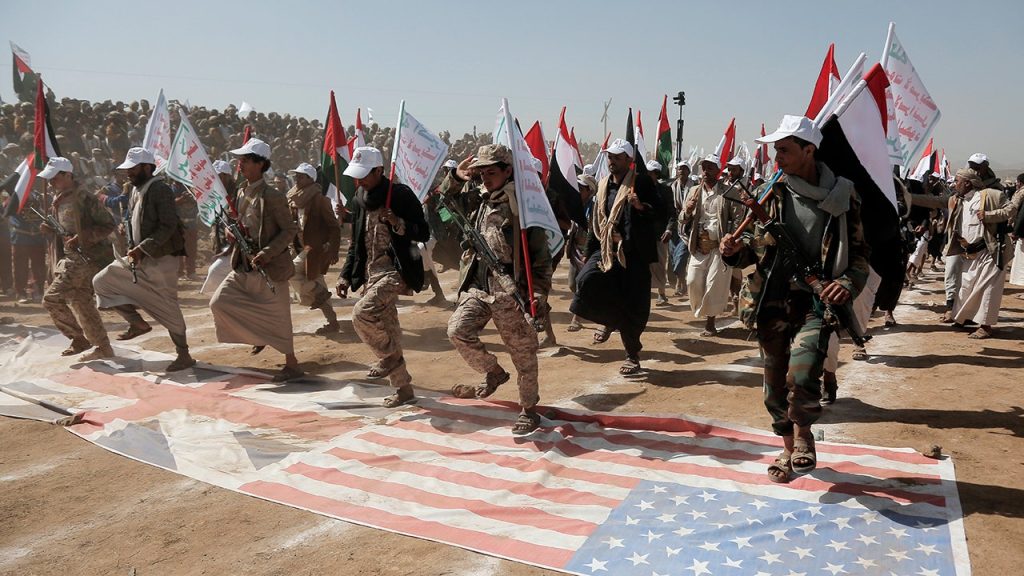An exiled Iranian resistance group known as The People’s Mojahedin Organization of Iran (PMOI/MEK) has uncovered evidence showing direct involvement of top regime officials in supporting the Houthis in their attacks against ships in the Red Sea. The Iranian-backed terror proxy based in northern Yemen has conducted more than 50 attacks targeting ships since October 7. Evidence provided by the MEK shows various methods and locations used by the Iranian Revolutionary Guard Corps-Qods Force (IRGC-QF) to supply weaponry, including drones, cruise missiles, ballistic missiles, and anti-ship mines to the Houthis. A Defense Intelligence Agency (DIA) report from February 2024 also demonstrates Iranian support to Houthi proxies through comparisons of unmanned aerial vehicles and missile systems.
The Houthis possess Iranian missiles that have been used to target Israel, including a Paveh land-attack cruise missile designated as “Quds-4” by the Houthis. The Combating Terrorism Center at West Point reported that after Hamas’ October 7 terror attacks, the Houthis attempted to target Israel directly on October 19. On March 18, the Israel Defense Forces confirmed that a Houthi cruise missile had infiltrated Israel, landing near Eilat. Despite being the newest member of the ‘Axis of Resistance,’ the Houthis have advanced long-range capabilities provided by Iran, including medium-range ballistic missiles and anti-ship ballistic missiles, according to Behnam Ben Taleblu, a senior fellow at the Foundation for Defense of Democracies.
The U.S. Treasury Department re-listed the Houthis as a Specially Designated Terror Group in February 2024 due to their recent escalations. The MEK provided information about the methods IRGC-QF uses to deliver military material to Yemen, including pressure on local barge owners, shipping via African countries, and hiding weapons inside fenders anchored below water. They also noted the Bahman Piers as secretive ports used to smuggle oil and petrochemicals and supply weapons to proxies. Additionally, Iran trains the Houthis in utilizing high-tech weaponry and has helped develop them into a conventional military force.
The Houthis showcase advanced weaponry in Yemen, with signs that it has been a testing ground for Iranian weapons. Iranian leadership, including senior IRGC-QF commanders, oversees coordination with the Houthis. Despite U.S. Treasury Department sanctions against Iranian officials involved in supporting the Houthis, hindering support remains challenging due to Iran’s well-established system of scaling up material support over time through various financial schemes. The international community is urged to hold the IRGC-QF accountable for using the Houthis to destabilize the region and to designate the IRGC as a terrorist entity to impede its activities.
Iran’s relationship with the Houthis is a key part of its strategy to cause harm to Israel, creating pressure for Israel to expand air and missile defense assets. This also reduces political space for Israel to accomplish military goals easily and can strain the U.S.-Israel relationship. Iran’s strategy of arming proxies in the region is working, and the world may see more weapons proliferation, increasing tensions and instability. Designating the IRGC as a terrorist entity would hinder its activities and send a message to the Iranian people about global recognition of the regime’s actions, legitimizing their resistance against it.


